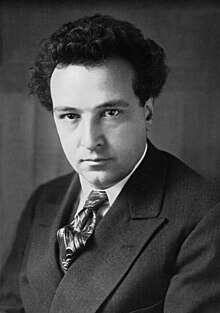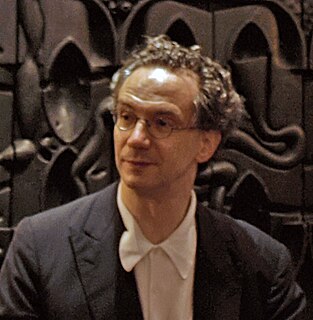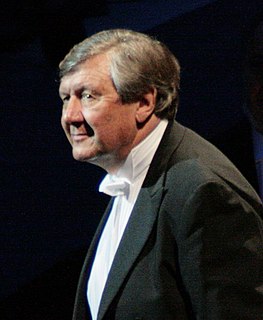
Symphony No. 6 in A minor by Gustav Mahler is a symphony in four movements, composed in 1903 and 1904. Mahler conducted the work's first performance at the Saalbau concert hall in Essen on May 27, 1906. It is sometimes referred to by the nickname Tragische ("Tragic"). Mahler composed the symphony at what was apparently an exceptionally happy time in his life, as he had married Alma Schindler in 1902, and during the course of the work's composition his second daughter was born. This contrasts with the tragic, even nihilistic, ending of No. 6. Both Alban Berg and Anton Webern praised the work when they first heard it. Berg expressed his opinion of the stature of this symphony in a 1908 letter to Webern:
"Es gibt doch nur eine VI. trotz der Pastorale."

Serge Alexandrovich Koussevitzky was a Russian-born conductor, composer and double-bassist, known for his long tenure as music director of the Boston Symphony Orchestra from 1924 to 1949.

Charles Munch was an Alsacian, German-born symphonic conductor and violinist. Noted for his mastery of the French orchestral repertoire, he was best known as music director of the Boston Symphony Orchestra.
The Cello Concerto No. 1 in E-flat major, Op. 107, was composed in 1959 by Dmitri Shostakovich. Shostakovich wrote the work for his friend Mstislav Rostropovich, who committed it to memory in four days and gave the premiere on October 4, 1959, with Yevgeny Mravinsky conducting the Leningrad Philharmonic Orchestra in the Large Hall of the Leningrad Conservatory. The first recording was made in two days following the premiere by Rostropovich and the Moscow Philharmonic, under the baton of Aleksandr Gauk.
The Cello Concerto No. 2, Opus 126, was written by Dmitri Shostakovich in the spring of 1966 in the Crimea. Like the first concerto, it was written for Mstislav Rostropovich, who gave the premiere in Moscow under Yevgeny Svetlanov on 25 September 1966 at the composer's 60th birthday concert. Sometimes the concerto is listed as being in the key of G, but the score gives no such indication.
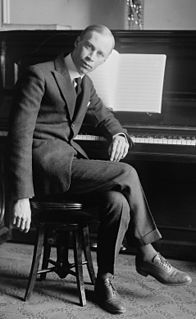
Symphony No. 4, Op. 47/112 is actually two works by Sergei Prokofiev. The first, Op. 47, was written in 1929 and premiered in 1930; it lasts about 22 minutes. The second, Op. 112, is a large-scale revision from 1947; it lasts about 37 minutes. Both use musical material originally written for Prokofiev's ballet The Prodigal Son. The two works are stylistically different, reflecting their respective compositional contexts. They are formally different too: the instrumentation and scope of the revision is larger.

Kent George Nagano is an American conductor and opera administrator. He is currently music director of the Montreal Symphony Orchestra since 2006, and general music director of the Hamburg State Opera since 2015.
Ralph Vaughan Williams's Symphony in E minor, published as Symphony No. 6, was composed in 1944–47, during and immediately after World War II and revised in 1950. Dedicated to Michael Mullinar, it was first performed, in its original version, by Sir Adrian Boult and the BBC Symphony Orchestra on 21 April 1948. Within a year it had received some 100 performances, including the U.S. premiere by the Boston Symphony Orchestra under Serge Koussevitzky on 7 August 1948. Leopold Stokowski gave the first New York performances the following January with the New York Philharmonic and immediately recorded it, declaring that "this is music that will take its place with the greatest creations of the masters." However, Vaughan Williams, very nervous about this symphony, threatened several times to tear up the draft. At the same time, his programme note for the first performance took a defiantly flippant tone.

Simone Margaret Young AM is an Australian conductor. She was born in Sydney, of Irish ancestry on her father's side and Croatian ancestry on her mother's side. Young was educated at the Monte Sant' Angelo Mercy College in North Sydney. She studied composition, piano and conducting at the Sydney Conservatorium of Music.
Alessandra Marc is an American dramatic soprano who has appeared at many of the world's opera houses and orchestras. Marc is particularly known for her interpretations of the works of Richard Strauss, Richard Wagner, Giuseppe Verdi, music of the Second Viennese School, and the title role in Puccini's Turandot.
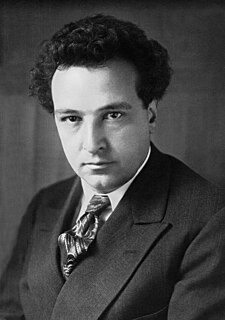
Symphonie Liturgique is the Third Symphony by the Swiss composer Arthur Honegger.

The Symphony No. 2 in D for strings and trumpet by Arthur Honegger was commissioned in 1937 by Paul Sacher to mark the tenth anniversary of the chamber orchestra Basler Kammerorchester. Progress was slow, however, in part due to the interruption of the Second World War. The music is primarily for strings alone and is very turbulent and troubled until the trumpet soloist enters near the end of the music, giving this mostly tragic work a hopeful ending.
The Symphony No. 2, Op. 247, is a work for orchestra by French composer Darius Milhaud. It was written in the U.S. in 1944 on a commission from the Koussevitzky Music Foundations in memory of Serge Koussevitzky's second wife Natalie, who had died in 1942. The premiere of the work was played by the Boston Symphony Orchestra in 1946, with the composer himself conducting.
The Symphony No. 6, Op. 343, is a work for orchestra by French composer Darius Milhaud. The piece was written in 1955 at the request of Charles Munch, for the seventy-fifth anniversary of the Boston Symphony Orchestra. This work is not to be confused with Milhaud's Chamber Symphony No. 6, op. 79 (1923).
The Symphony No. 11, Op. 384, nicknamed Romantique, is a work for orchestra by French composer Darius Milhaud. The piece was written in 1960 on a joint commission from the Dallas Symphony Orchestra and the Dallas Public Library, and received its premiere under conductor Paul Kletzki.

The Symphony No. 4 by Swiss composer Arthur Honegger is a work for orchestra, written in 1946 on a commission from Paul Sacher. Subtitled Deliciæ Basiliensis, it was first performed on 21 January 1947, by the chamber orchestra Basler Kammerorchester under Sacher. On the same program were the premieres of two other works commissioned by Sacher: Igor Stravinsky's Concerto in D and Bohuslav Martinů's Toccata e due Canzoni.

The Symphony No. 5 by Swiss composer Arthur Honegger is a three-movement work for orchestra written in the autumn of 1950. Its subtitle Di tre re is a reference to the D (re) played by the solo timpani and basses at the end of each movement. It was commissioned by the Natalie Koussevitzky Foundation and first performed on March 9, 1951, by the Boston Symphony Orchestra under Charles Munch.
Loco is an orchestral composition in one movement by the American composer Jennifer Higdon. The work was commissioned by the Ravinia Festival of Highland Park, Illinois to commemorate the Ravinia train as part of the Train Commission Project. It was first performed on July 31, 2004 at the Ravinia Festival by the Chicago Symphony Orchestra.

Marc Soustrot is a French classical conductor. He was the music director of the Orchestre national des Pays de la Loire from 1976 to 1994, and from 1995 to 2003 GMD of the Beethoven Orchester Bonn which plays in both opera and concert. He has worked at major opera houses in Europe and made several recordings, such as Leonore, Beethoven's first version of Fidelio, the piano concertos and symphonies by Camille Saint-Saëns, Honegger's Jeanne d'Arc au bûcher, and Penderecki's St Luke Passion.



